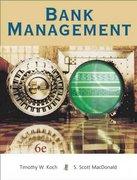Question
1.A competitive market has demand and supply functions Pd = 25 - Q^2 and Ps = 2Q + 1, respectively. At the market equilibrium (Pd
1.A competitive market has demand and supply functions Pd = 25 - Q^2 and Ps = 2Q + 1, respectively. At the market equilibrium (Pd = Ps), P* = 9 and Q* = 4.
A. What is the total revenue for the producers (or equivalently, the total expenditures for the consumers) in this market?
B. Use integration to find the total willingness to pay by the consumers for the market equilibrium quantity (Q* = 4).
C. What is the total consumer surplus (CS)?
2.The demand function is p = 100/q and an increase in price reduces quantity demanded from q = 10 to q = 5. Compute the lost consumer surplus (CS). First draw a diagram that illustrates the lost CS. Notice that you could integrate with respect to either or (in the latter case, after finding the inverse demand function, = () and writing the endpoints in terms of ).
3.What will happen if consumers are not able to differentiate low-quality from high quality versions of a similar good
4.Use the following data: total population, 500; population under 16 years of age or institutionalized, 120; not in labor force, 150; unemployed, 23; part-time workers looking for full-time jobs, 10.
a. Calculate the unemployment rate.
b. Calculate the labor participation rate.
c. If 50 workers were not counted in the labor force one month recalculate unemployment and labor force participation.
5.Assume only two countries, China and the US. If China decides to stimulate growth through a policy of running a large export trade surplus, does China's national savings increase? Show the relationship between China's national savings, domestic investment and net capital outflow (NCO).
6.Turning to the US, given China's trade surplus, why does the US have to run a trade deficit (NX<0) and a net capital account deficit (NCO<0) if China runs a trade surplus?
7.Suppose autonomous consumption is $500, government spending $1,000, panned investment is $1,250, and net exports are -$250 and the MPC is 0.8. What is the equilibrium value GDP?
8. If the marginal propensity to consume is 0.8, by how much will an increase in planned investment spending of $400 billion increase equilibrium real GDP?
9.At what rate of annual interest will an investment quadruple itself in 12years
10.You are considering making an investment. The initial payment for the investment is $1000. In the second
year, you will receive $3500, in the third year you will have to pay $2000, in the fourth year you will
receive $6000, and in the fifth year you have to pay $6500. The rate of return is 5%. What is the present
value of this investment? Use the NPV function for this question.
Step by Step Solution
There are 3 Steps involved in it
Step: 1

Get Instant Access to Expert-Tailored Solutions
See step-by-step solutions with expert insights and AI powered tools for academic success
Step: 2

Step: 3

Ace Your Homework with AI
Get the answers you need in no time with our AI-driven, step-by-step assistance
Get Started


